Top Famous Ocean and Sea Paintings
- The Ocean in Paintings: A Short Introduction
- Famous Sea Pictures
- Christ in the Storm at the Sea of Galilee, Rembrandt
- Monk by the Sea (c.1808-1810) by Caspar D. Friedrich
- The Raft of the Medusa by Theodore Gericault (c.1818 - 1819)
- The Great Wave off the Coast of Kanagawa by Katsushika Hokusai (1831)
- The Fighting Temeraire That Was Tugged to the Last Berth by J. M. W. Turner (1839)
- The Ninth Wave by Ivan Aivazovsky
- The Icebergs by Frederic Edwin Church
- Eternity by Gustave Courbet (c.1865 - 1869)
- Sunrise/Impression by Claude Monet
- The Gulf Stream by Winslow Homester
Some see oceans as a source of sustenance, adventure, and opportunity. Others see them as unpredictable and dangerous. Truthfully, the ocean has all these characteristics. It is a multifaceted object that has inspired artists for centuries. This article will discuss some of the most famous ocean paintings throughout art history.
The Ocean in Paintings: A Short Introduction
Oceans are a part of many cultures worldwide. The sea provided food and income for many coastal areas. It became sacred and was worshiped as a god. This is seen all over the globe, for example, Poseidon, the ancient Greek sea god, or Mazu, the goddess of the sea in Chinese mythology.
It is difficult to determine when people began to create art that celebrates the ocean. Sea motifs have been discovered in many ancient artifacts around the globe. Scrolls with ocean paintings from the Song Dynasty in China (960-1279) have been discovered.
Art historians believe this, as well as scrolls from Japan dating back to the 1300s, has led them to believe that ocean paintings were famous in Asia hundreds of years earlier than in Europe.
In Europe, the first famous ocean paintings were created in the 16th Century. Seascapes became particularly important during the Dutch Golden Age (between 1588 and 1672). The Netherlands was one the richest countries in the World during this period due to its extensive trade and naval prowess, with many famous paintings depicting magnificent naval ships in battle date from this period.
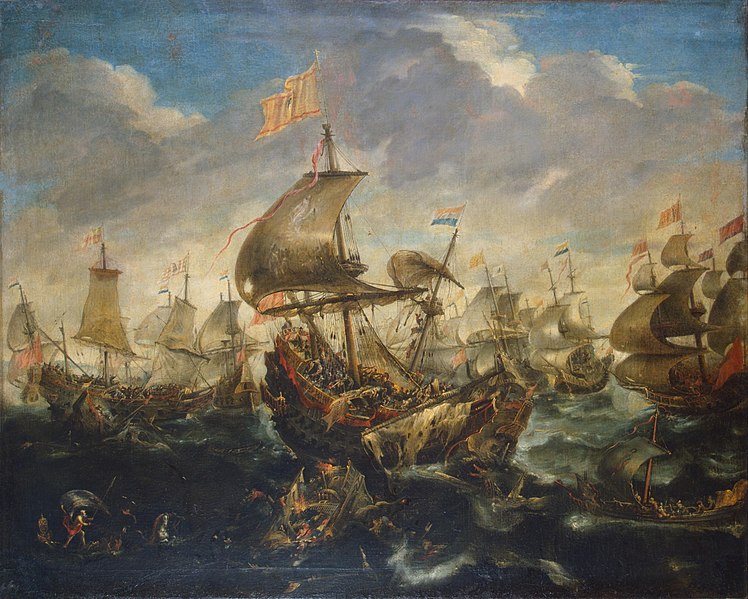
Andries Van Eertvelt - Sea Battle
During the Romantic movement in the 1800s, sea paintings became popular. Traveling by ship made it possible to discover North America and other untouched, new lands, so the ocean was associated with exploration and optimism.
Artists who traveled to far places and sailed the seas made pictures of their trips and sold them when they returned. After 1867, the Impressionist artists, who followed the Romantics, liked the sea very much. Many of them made pictures of the sea from beaches and docks. They liked how the light made the sea look different.
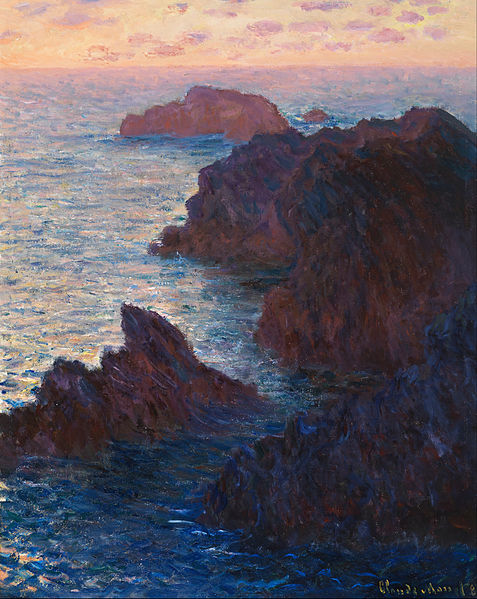
Claude Monet - Rocks At Belle-lle, Port-domois
The sea looks different at different times and seasons, so artists like it. Not just the Impressionists made sea pictures. Many artists liked to make their own sea pictures.
Even if art styles change, one thing stays the same: artists like the sea a lot.
Famous Sea Pictures
The sea made many famous artists want to create pictures. These sea pictures tell us about when they were made and what the artist was thinking.
Christ in the Storm at the Sea of Galilee, Rembrandt
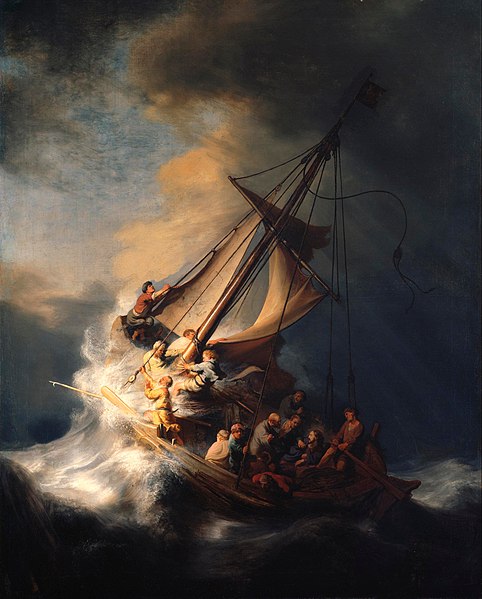
Rembrandt Christ In The Storm On The Lake Of Galilee
"Christ in the Storm at the Sea of Galilee" was created in 1633 by Rembrandt. He was a very famous artist in the Dutch Golden Age. He is best known for using chiaroscuro, a technique that allows artists to create extreme contrasts in light and shade. Rembrandt would not normally be included in a list that includes ocean painters.
Rembrandt painted only one seascape, "Christ in Storm on the Sea of Galilee". Pieter Lastman was a Dutch painter who is known for his academic works. Rembrandt received training from him. Rembrandt's early paintings show the influence of Lastman in his subject choice. Christ in the Storm depicts Jesus' use of his power in Matthew 8:23 to calm down a storm.
The waves slam the boat mercilessly in Rembrandt's depiction. Each figure is painted in great detail to convey the fear they are feeling. Only Jesus' expression is serene. The disciple looking out directly from the painting bears a striking resemblance to the artist.
Monk by the Sea (c.1808-1810) by Caspar D. Friedrich

Caspar David Friedrich - Der Mönch Am Meer
Caspar David Friedrich was a German painter who became famous during the Romantic period. The popularity of his paintings and the number of artists who credit him with inspiration are evidence of his contributions to the world of art. His work is easily identifiable by its compositional style. Monk by the Sea, however, is unique.
Monk by the Sea includes Friedrich's Ruckenfigur, a figure looking out at a vast landscape. The sky takes up three-quarters of the canvas, leaving only a small area for land and sea. The small figure stares out at a dark scene in silent contemplation.
This famous ocean painting conveys a sense of calm yet an almost oppressive loneliness.
The Raft of the Medusa by Theodore Gericault (c.1818 - 1819)
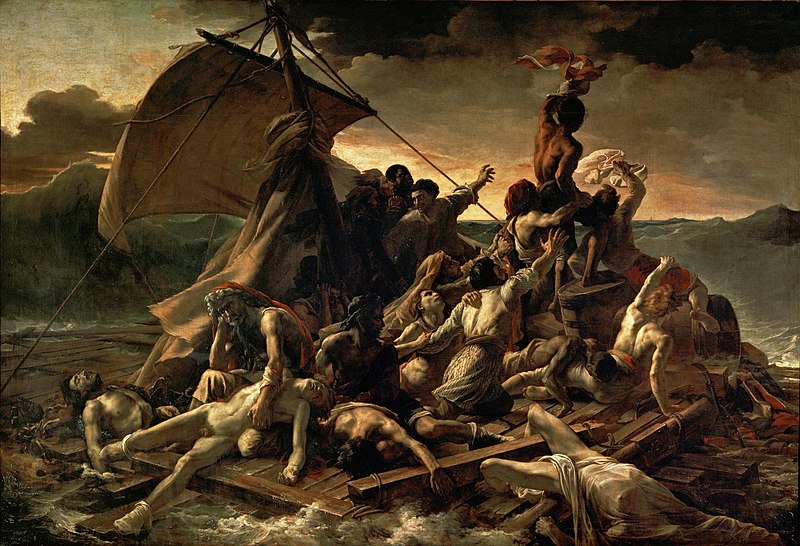
Jean Louis Théodore Géricault - La Balsa De La Medusa
Theodore Gericault (1791-1824) Medium Oil on canvas Dimensions (490 cm x 716) Where it is currently housed The Louvre Museum, Paris, France. What It's Worth Uncertain.
Theodore Gericault was a French painter with a brief but notable career. Gericault, who suffered from tuberculosis as well as lasting injuries due to a riding accident, died at 32. The artworks that he produced during his lifetime have considerable value, even though he did not grow his talent in full.
Gericault is best known for his ocean painting, The Raft of the Medusa (1818-1819). The painting depicts the aftermath after the French naval ship Medusa, which sank near the coast of Senegal, was wrecked. The survivors of the Medusa wreck had to endure a 13-day ordeal at sea that led to cannibalism, among other horrific acts.
Gericault is said to have stolen bodies from morgues and used them as models for his paintings.
The Great Wave off the Coast of Kanagawa by Katsushika Hokusai (1831)
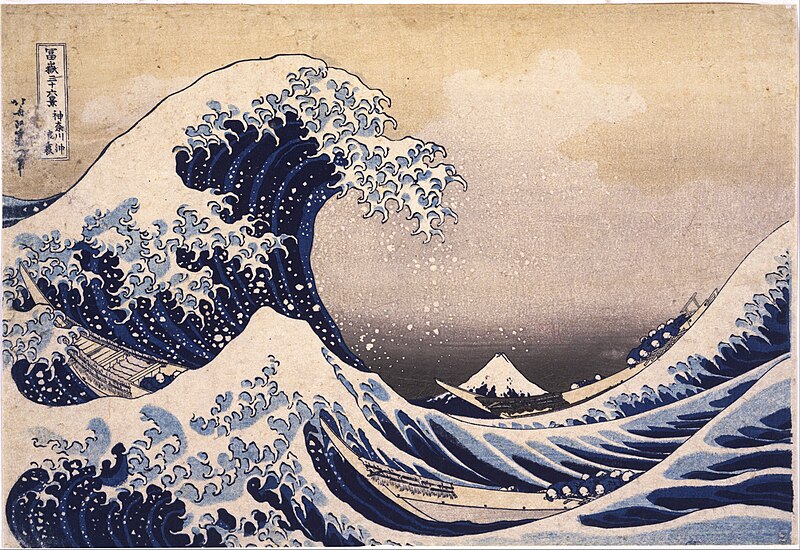
Katsushika Hokusai - The Great Wave Off The Coast Of Kanagawa
Artist Katsushika (Hokusai) (1760-1849) Date Painted (ink on paper) 1831 Medium (woodblock print). Dimensions (cm 38 x 26. Where it is currently housed. As a print, The Great Wave copies can be found in many museums and galleries around the globe. What it's Worth. Estimated to be worth $150,000.
Art critics from the East and the West praise Katsushika Hokusai. He achieved a unique art style by combining features of both hemispheres. Because of this, as well as the many successful paintings he produced during his life, he is still highly regarded today.
Hokusai loved to paint Mount Fuji. The ocean also has a special meaning in Japanese culture and was often featured in his works.
Western art lovers often view The Great Wave Off the Coast of Kanagawa from left to right. However, the painting was intended to be read from right to left, as Japanese is written, which gives it a sense of danger.
The Fighting Temeraire That Was Tugged to the Last Berth by J. M. W. Turner (1839)

J. M. W. Turner - The Fighting Temeraire Tugged To Her Last Berth To Be Broken Up
J. M. W. Turner is another Romantic artist and one of Britain's most famous ocean painters. Turner used his art to express his feelings and thoughts, and two of his best-known ocean paintings, The Slave Ship (1840) and The Fighting Temeraire (1840), show this.
Turner is best known for his naval ship paintings, The Fighting Temeraire, his most famous. The painting depicts the HMS Temeraire, which is known for its participation in the Battle of Trafalgar. Turner is disappointed by the blandness and practicality of the modern world.
The Ninth Wave by Ivan Aivazovsky

Aivazovsky - The Ninth Wave
Ivan Aivazovsky has been hailed as one of Russia's greatest artists. He was born in Feodosia, a small town along the Black Sea coast. He always felt a strong connection to the ocean, and after his marine paintings gained popularity, he was appointed the official painter for the Russian Navy. The Ninth Wave represents the maritime expression with the same name. The saying states that when there is a series of large waves, the biggest and most dangerous is the ninth one.
The best-known ocean painting depicts a turbulent sea, but he keeps the colors warm and light to add a sense of hope.
The Icebergs by Frederic Edwin Church
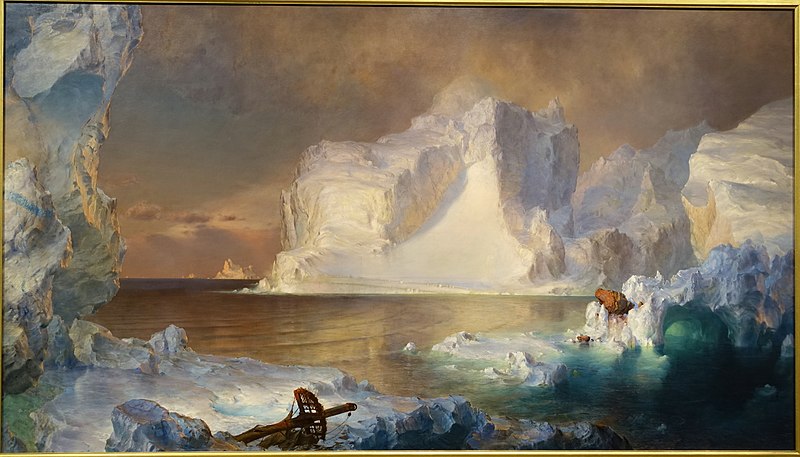
The Icebergs By Frederic Edwin Church, 1861
Frederic Edwin Church is an American painter and a member of the Hudson River School. In fact, this was not a school but rather an art movement that included both Romanticism and the landscape of North America. Church was inspired by the art movement when Thomas Cole, the founder of the movement who painted The Oxbow (1836), mentored him.
Church, along with some of his closest friends, took a journey to the east coast of Canada in 1859. In Newfoundland & Labrador, he saw his first Arctic Sea icebergs. He was enamored with them and created over 100 drawings during one month there.
Even though he was seasick, he went out in small boats to see the icebergs up close. Upon his return, he began work on "The Icebergs".
Eternity by Gustave Courbet (c.1865 - 1869)

Eternity By Gustave Courbet (C.1865 - 1869)
Gustave Courbet was a French realist pioneer who was active from the 1840s until the 1880s. His early career was defined by some of his most famous and politically intense paintings, like The Stone Breakers (1849). In the second half of his career, he mainly painted nature.
Courbet painted many seascapes during his career, but "Eternity", unlike the others, is unique.
First, he didn't reveal the location of the seaside in the painting, as was characteristic of his other works. Courbet painted this picture on a dark canvas (as it was common in earlier art movements) to create a moody feel.
Sunrise/Impression by Claude Monet
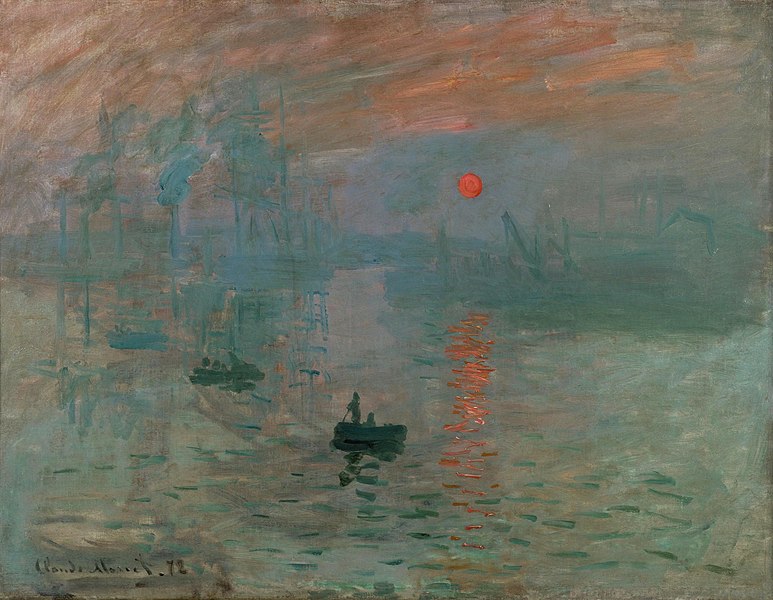
Sunrise, Impression By Claude Monet (1872)
Claude Monet was a French impressionist artist known for his beautiful paintings of nature around the globe. Monet would focus on one subject and paint it repeatedly in different lights. Monet painted a lot of sea scenes during his lifetime.
Monet's most well-known marine painting is Impression, Sunrise, also known as Impression, Soleil levant in French. The painting is particularly significant to Monet as it depicts Le Havre, the French town where he was born.
A critic said that the rough brushstrokes were just "impressions," and that's how the Impressionist movement got its name.
The Gulf Stream by Winslow Homester

Winslow Homer - The Gulf Stream (1899)
Winslow Homer, a self-taught American ocean painter, was famous for his work. These are his most famous paintings. He loved painting the ocean. Moonlight (1874), The Herring Net (1885), and Sunlight on the Coast (1990) are among his most famous works.
Homer traveled to the Bahamas many times and crossed the Gulf Stream several times. On one of his trips, he was inspired to paint The Gulf Stream. The painting depicts a scene of despondency - a boat without a sail, a waterspout far away, sharks everywhere, and no reserve in sight.
Homer painted a distant ship as a hint of hope before displaying the painting.
This article will take you through some of the most famous paintings depicting oceans in art history. There are still many other incredible sea paintings to discover. Do some research if you love the ocean. You will be surprised at how many beautiful marine paintings there are.
No Comments Yet...